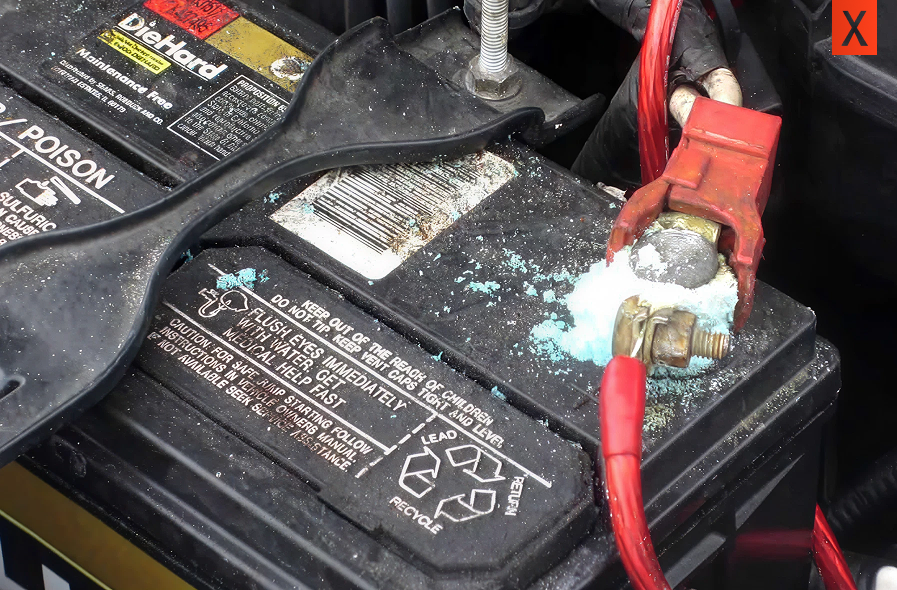A car’s battery performs several important functions. It helps start the engine and keeps the electronics working properly. However, batteries aren’t immune to wear. Their performance drops as they age.
A failing battery shows signs of problems long before it dies. Knowing what these signs are can help replace the battery in time and prevent breakdowns.
This article mentions common battery failure symptoms to help you stay on top of potential issues.
Article Highlights
- Signs of a failing car battery
Slow Engine Start
Listen closely when you start your car. A healthy battery delivers a swift, powerful crank. A weak one offers a slow, laboured groan. Moreover, the engine’s rotation becomes slow as well when the battery is weak. The engine requires power to start, and a weak battery fails to provide it adequately. Cold weather often makes this symptom more noticeable, as low temperatures reduce battery efficiency.
Dim or Flickering Headlights
Your headlights act as a simple gauge to check the battery’s health. If you want to check your battery’s health, turn it on before starting the engine. Lights with a bright and steady shine are the sign of a healthy battery. A weak battery causes the lights to appear dim. They may also flicker due to an unstable current flow. Dimming can also indicate alternator underperformance, especially if brightness changes with engine speed.
Also Read: Headlight Restoration: How to Improve Visibility with Quality Services
Get Your Car Looking New Again!
Our skilled team brings your damaged car body back to its original condition expertly.
Battery Problems
If you want to check for overall battery problems, start by checking your battery’s case. A swollen case indicates a problem with the battery.
Overcharging or a faulty voltage regulator are common causes of battery swelling. They can generate internal heat and gas that causes swelling or a bulge.
A swollen battery is a safety risk, which can explode or cause fire. Replace it to stay safe. A swollen battery may also indicate internal shorting or gas buildup due to electrolyte breakdown, especially in older batteries. Check the battery terminals as well. A white, blue, or green layer on the terminals means corrosion. It resists the flow of current, which directly affects the battery’s performance.
Also, make sure the connectors are tight. Loose connectors affect the battery’s ability to charge and start the engine.

Strange Smells or Leaking Fluid
A rotten egg smell from the battery compartment is a major warning sign. It comes from battery acid and usually means the battery is overheating or boiling inside.
You may also see fluid leaking. This liquid is highly corrosive and damaging to other engine parts. At this stage, the damage is beyond recovery. Consider replacing the battery.
Also Read: Warning Signs Your Car Needs Urgent Repairs
Book Your Repair Today!
Your car deserves the best care. Book your car body repair now and enjoy fast, reliable service.
Frequent Need for Jump-Starts
It’s fine to need a jump-start occasionally. However, repeated jumps indicate a dying battery. A dying battery cannot hold a charge. It drains away quickly when the car is not in use, leading to frequent jump-starts. If your car still struggles to start after a long drive, the alternator could be undercharging.
Electrical System Problems
Cars rely on a stable voltage to work efficiently. A weak battery creates electrical problems. You may see random glitches in the car’s electronics. Power windows may move slowly than usual. The radio could lose its presets. Dashboard lights may start flickering.
These issues seem unrelated, but they often share a common cause. The failing battery cannot power the electronics properly. Modern cars with many sensors and electronic modules are especially sensitive to low voltage, which can cause unusual warning lights or system errors.
Dashboard Indicators
A car dashboard has different types of lights to indicate underlying problems.
Keep an eye on the battery-shaped light. It should turn off after the engine starts. If it stays on, there might be a problem with your car’s charging system or the battery. If the light turns on while driving, it usually points to a charging issue (often alternator-related), not the battery itself.
Some cars also have battery health monitors, which trigger a warning light when the battery is in trouble.
Note: Many of these symptoms can be caused by faults in the alternator, wiring, connections, or starter. So, it’s wise to test the complete electrical system, not just assume the battery is at fault.
Need Car Body Repair?
Get a free assessment and quote from our certified technicians today!
Final Thoughts
Your car battery will not last forever. It will start showing symptoms when it’s time to replace the battery. Slow engine crank, dim lights, and electrical glitches are common signs of a dying battery.
Pay attention to these signs and replace the battery on time to drive with peace of mind.
Frequently Asked Questions
A slow engine crank is the most obvious sign. This happens when the battery can’t provide enough power for the engine to start.
Cold weather slows down the battery’s internal chemical reactions. This reduces its power output and affects your car’s ability to start quickly.
It means there could be a problem with the car’s alternator. The alternator charges the battery while the engine runs. A faulty alternator stops charging the battery. This will drain the battery completely and you will be stranded when the battery dies.
Keep Your Car Running Strong and Looking Sharp!
Good battery health means smooth drives, and quality bodywork preserves your car’s value. At AVX, we deliver reliable car body repairs to keep your car in the best shape possible. Contact us today to obtain our services.



